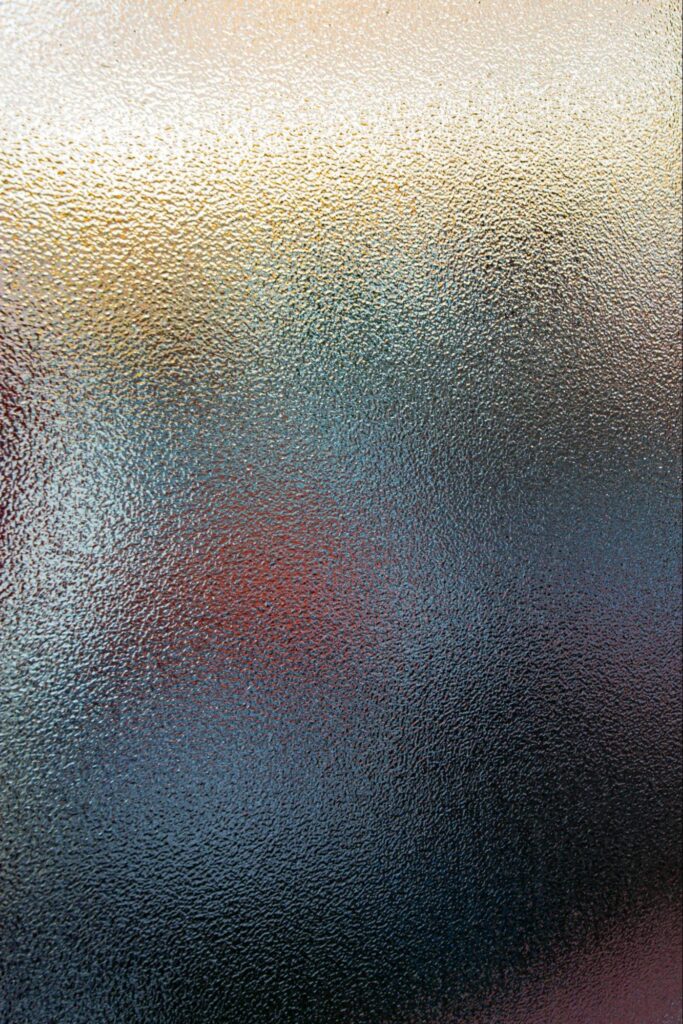Frosted glass is a versatile and elegant option for adding privacy and style to your space. Whether you are looking to enhance the aesthetics of your home or office, or seeking functional solutions for privacy concerns, understanding the different types and techniques of frosted glass is essential. Today we will dive into the world of frosted glass, exploring its manufacturing process, benefits, uses, techniques, types, considerations for choosing the right option, and the future trends in the industry.
Understanding Frosted Glass
Frosted glass is created through various techniques that alter the surface of the glass to diffuse light and create a translucent appearance. This effect makes it an ideal choice for areas where privacy is desired while still allowing light to pass through. Additionally, frosted glass adds an elegant touch to any space, enhancing its overall aesthetic appeal.
The Manufacturing Process of Frosted Glass
The manufacturing process of frosted glass involves treating the glass surface to create a layer of microscopic imperfections. These imperfections scatter light as it passes through the glass, resulting in a frosted appearance. One common method is sandblasting, where fine particles of sand or other mediums are directed at high speed onto the glass surface. Another popular technique is acid etching, which involves applying an acid-based substance to the glass to achieve the desired effect.
When it comes to sandblasting, different types of abrasive materials can be used depending on the desired level of opacity and texture. For example, aluminum oxide is often used for a more subtle frosted effect, while silicon carbide can create a deeper and more pronounced texture. The sandblasting process requires precision and expertise to ensure an even distribution of the abrasive material and to achieve the desired level of frosting.
On the other hand, acid etching involves carefully applying an acid-based substance, such as hydrofluoric acid, to the glass surface. The acid reacts with the glass, creating a chemical reaction that etches the surface and produces a frosted appearance. This technique allows for more intricate designs and patterns to be etched onto the glass, making it a popular choice for decorative applications.
Benefits and Uses of Frosted Glass
Frosted glass offers several benefits that make it a desirable option for both residential and commercial applications. Firstly, it provides privacy by obscuring the view while still allowing natural light to illuminate the space. This makes it ideal for areas such as bathrooms, conference rooms, and partitions. Moreover, frosted glass is less susceptible to fingerprints and smudges compared to clear glass, making it a low-maintenance choice.
In addition to its practical advantages, frosted glass also has a wide range of uses in interior design. It can be used to create a sense of separation and privacy in open floor plans without sacrificing the flow of natural light. Frosted glass doors and windows can add a touch of elegance and sophistication to any space, making it a popular choice for modern and contemporary designs. Furthermore, frosted glass can be incorporated into furniture and decorative elements, such as tabletops, shelves, and room dividers, to create a visually appealing and cohesive look.
Overall, frosted glass is a versatile material that offers both functionality and aesthetic appeal. Whether it’s for privacy, design enhancement, or low-maintenance requirements, frosted glass continues to be a popular choice in various architectural and interior design applications.
Different Techniques to Frost Glass
There are several techniques available to achieve the frosted effect on glass surfaces. Two commonly used techniques are sandblasting and acid etching.
Aside from sandblasting and acid etching, there are other innovative methods to frost glass surfaces that offer unique results. One such technique is known as frosting spray, where specialized spray paint is applied to the glass to create a frosted appearance. This method is popular for its ease of application and ability to achieve a uniform frosted look.
Sandblasting Technique
The sandblasting technique involves propelling fine particles of sand or abrasive material at a high velocity onto the glass surface. The force of the particles creates minute indentations, resulting in a frosted appearance. This technique can be used to create various levels of opacity and patterns on the glass, depending on the desired outcome.
Moreover, sandblasting is a versatile method that can be used on different types of glass, from windows to glassware, offering a wide range of applications for both decorative and functional purposes.
Acid Etching Technique
Acid etching is another popular method for frosting glass. It involves applying an acid-based substance onto the glass surface, which chemically reacts with the glass to create a frosted effect. This technique allows for precise control over the level of opacity and patterns, offering customization options for different applications.
Furthermore, acid etching is commonly used in the production of decorative glass items such as vases, mirrors, and glass doors, where intricate designs and frosted details are desired to enhance the overall aesthetic appeal.
Types of Frosted Glass
There are different types of frosted glass available, each with its unique characteristics and applications.
Frosted glass is a versatile material that can be used in various ways to enhance both the aesthetic appeal and functionality of a space. From providing privacy to adding a decorative touch, frosted glass is a popular choice for interior design projects.
Obscure Frosted Glass
Obscure frosted glass is a popular choice for areas that require high levels of privacy, such as bathroom windows or shower enclosures. It diffuses light and obscures the view, ensuring privacy while still allowing natural light to filter through. Obscure frosted glass is available in various patterns and textures to suit different interior design styles.
One of the key advantages of obscure frosted glass is its ability to create a tranquil atmosphere in a space. By softening harsh light and minimizing glare, this type of frosted glass can help create a relaxing environment, making it ideal for areas where privacy and comfort are paramount.
Patterned Frosted Glass
Patterned frosted glass features intricate designs or motifs that add visual interest to any space. These patterns can range from subtle and understated to bold and eye-catching. Patterned frosted glass is commonly used for decorative purposes, such as room dividers, cabinet doors, or accent windows.
When used in interior design, patterned frosted glass can serve as a focal point or a subtle accent, depending on the complexity of the design. The interplay of light and shadow on the patterns can create a dynamic and engaging visual effect, adding depth and dimension to the space.
Textured Frosted Glass
Textured frosted glass creates a tactile and visually appealing surface, adding a three-dimensional element to any space. It offers both privacy and a unique design aesthetic. Textured frosted glass is frequently used in interior doors, partitions, and other architectural features.
The textured surface of this type of frosted glass not only enhances visual interest but also provides a tactile experience for users. The play of light on the textured surface can create intriguing patterns and shadows, adding a touch of sophistication to the overall design scheme.
Choosing the Right Frosted Glass for Your Needs
When selecting frosted glass for your space, there are several factors to consider to ensure you make the right choice. Frosted glass is a versatile material that offers both functionality and style, making it a popular choice for various applications.
Whether you are looking to enhance privacy, add a decorative touch, or simply diffuse light in a room, frosted glass can meet your needs. By understanding the different considerations involved, you can select the perfect frosted glass option for your specific requirements.
Considerations for Privacy
Privacy requirements vary depending on the location and purpose of the glass installation. Determine the level of privacy needed and choose the appropriate opacity and pattern of frosted glass accordingly. For areas requiring maximum privacy, consider obscure frosted glass, while for decorative applications, patterned or textured options may be more suitable.
Obscure frosted glass features a high level of opacity, making it ideal for spaces like bathrooms or conference rooms where complete privacy is essential. On the other hand, patterned or textured frosted glass can add a decorative element to doors, windows, or partitions, striking a balance between privacy and aesthetics.
Aesthetics and Light Transmission
Consider the overall design aesthetic of your space and how frosted glass can complement it. Choose patterns, textures, and opacities that enhance the interior design. Additionally, take into account the desired level of natural light transmission. Frosted glass allows diffused light to enter a room, creating a soft and inviting ambiance.
By strategically placing frosted glass panels in areas where natural light is desired but direct visibility needs to be obscured, you can achieve a harmonious balance between aesthetics and functionality. The soft glow of diffused light through frosted glass can create a calming atmosphere, perfect for spaces like bedrooms or relaxation areas.
Maintenance and Durability
Consider the maintenance requirements of your chosen frosted glass option. Certain patterns or textures may require more frequent cleaning to remove dust or fingerprints. Additionally, choose a durable glass material that can withstand normal wear and tear to ensure longevity.
Regular cleaning with a mild glass cleaner and a soft cloth can help maintain the pristine appearance of frosted glass surfaces. Opting for tempered or laminated frosted glass can enhance durability, making it resistant to breakage and ensuring the safety of occupants in case of impact. By selecting a frosted glass option that is both easy to maintain and durable, you can enjoy its benefits for years to come.
The Future of Frosted Glass
The world of frosted glass is constantly evolving, with technological advancements and innovations driving its future.
One of the most exciting developments in the realm of frosted glass is the integration of smart glass technology. Smart frosted glass can switch between transparent and opaque states with the application of an electric current, offering privacy on demand. This technology is revolutionizing the way we interact with glass surfaces, providing both functionality and aesthetic appeal.
Technological Advancements in Frosted Glass
New technologies are emerging that make the manufacturing process for frosted glass more efficient and environmentally friendly. These advancements result in higher quality products and reduced production costs, making frosted glass more accessible for various applications.
In addition to smart glass technology, researchers are exploring the incorporation of nanomaterials into frosted glass to enhance its properties. Nanotechnology allows for the manipulation of glass at the molecular level, improving its strength, durability, and thermal insulation. This breakthrough opens up a world of possibilities for frosted glass applications in architecture, automotive design, and beyond.
Sustainable Practices in Frosted Glass Production
With increasing environmental consciousness, the glass industry is adopting sustainable practices to minimize its ecological footprint. This includes using eco-friendly materials and manufacturing processes that reduce energy consumption and waste generation. As a result, frosted glass production is becoming more sustainable, aligning with the growing demand for environmentally conscious products.
Furthermore, advancements in recycling technologies are enabling the reuse of glass waste in the production of frosted glass. By closing the loop and implementing a circular economy approach, manufacturers can reduce the extraction of raw materials and decrease the environmental impact of frosted glass production. This commitment to sustainability not only benefits the planet but also enhances the reputation of frosted glass as a responsible choice for architectural and design projects.
Conclusion
In conclusion, exploring the various types of frosted glass allows for informed decision-making when it comes to adding privacy and style to your space. Whether you opt for obscure, patterned, or textured frosted glass, consider your specific requirements for privacy, aesthetics, and maintenance. Stay up-to-date with the latest advancements in the industry, as frosted glass continues to evolve and meet the demands of modern design and sustainability practices. With its versatility and timeless appeal, frosted glass remains a popular choice for both residential and commercial applications.


